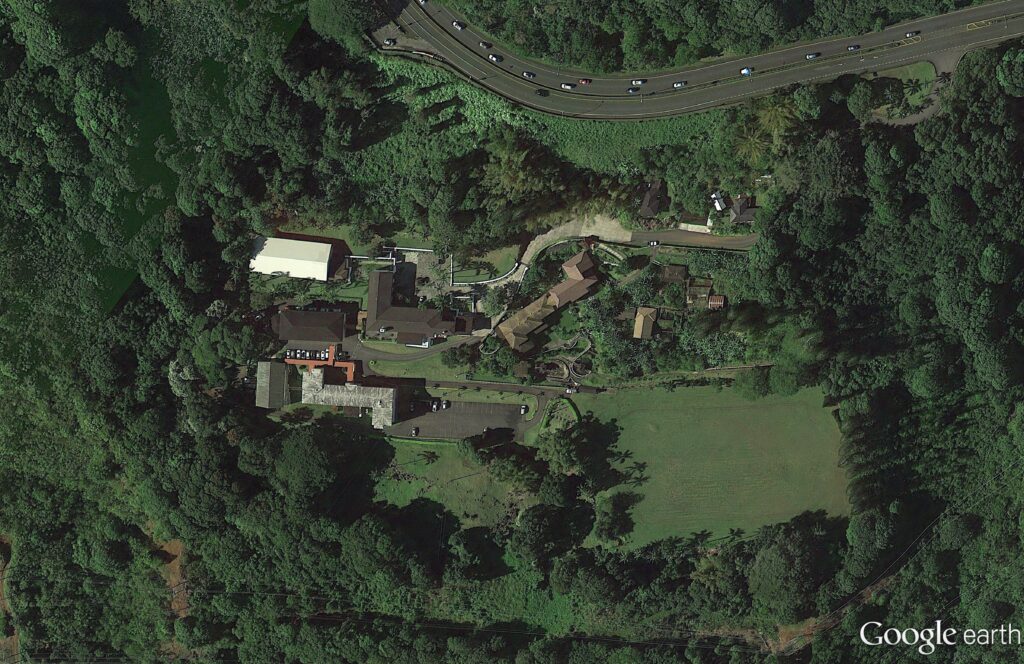The name, “Kekaha,” can be interpreted to mean “dry land” or an area near the shore that is not favorable for planting. The Kekaha region of Kauai has low annual rainfall and no permanent streams. Despite the low rainfall, early visitors to Oahu in the late 1700s indicate that the Kekaha area was well-populated.
Inhabitants manufactured cloth from wauke (Mulberry), and grew taro and sugarcane in the swampy ground. The perpetual swamplands of the plain apparently were greatly enlarged during periods of heavy winter rains.
A Chinese immigrant, Leong Pah On, began growing rice commercially in the 1860s in the drained swamplands of the area, eventually cultivating 600 acres throughout Mānā, Kekaha, and Waimea for rice production.
Pah On imported laborers from China to work the rice fields, presumably creating a significant Chinese population in the area. Rice cultivation continued until 1922 when the Kekaha Sugar Co. assumed ownership of the lands. (Cultural Surveys)
A railroad was constructed for the Kekaha Sugar Company in 1884, which ran from Waimea to the sugar mill at Kekaha. A visitor in described the main track:
“… They have engineers only – no firemen – no brakemen. No brakes on cars. Roads are dead level. We passed cane fields and grazing pastures all in sight of ocean – as our course was parallel to beach and one mile from it.” (Cultural Surveys)
The Kekaha Sugar Co. saw expansion after 1907 when the construction of the plantation’s major irrigation ditch was completed. Most of the cane was initially transported by flume.
By 1910 the plantation had 15 miles of permanent railroad track transporting cane from collection points to the mill and then transporting bags of sugar to the steamship landing at Waimea. In this timeframe the plantation employed approximately 1,000 people.
This railroad generated a deal of excitement in 1920, when it became site of the first and only train robbery to take place in the Hawaiian Islands.
“At the western most section of the Kekaha Sugar Co. were the fields in the Mānā area, which extended to the current location of the airfield at Barking Sands. The families working on these fields lived at Mānā Camp. Due to the distance of this camp from the main office at Kekaha, a paymaster, Mr. Asser, was sent to the camp each month.
On February 11, 1920, the pay for all of the workers, $11,000, was carried in individual envelopes by the paymaster, who rode on the plantation train. The tale of “The Great Train Robbery” was told by Philip Rice in the February 28, 1968 issue of the Garden Island:
“The locomotive proceeded towards the camp, passing through the high cane. At a place where a sharp curve or poor condition of the track necessitated a reduction in speed to about that at which a man could walk, a person completely clothed in the garb of a cane loader stepped forth from the tall cane. Over his face was a part of an old towel with eye holes cut in it. …”
“He pointed a revolver at Mr. Asser and the locomotive engineer, ordered the locomotive stopped and that they dismount. The two complied, and the holdup man boarded the locomotive, started it, and proceeded toward Mānā Camp, quite a distance beyond and out of sight of the holdup point…”
“When the robbery was discovered, a search was made where the locomotive had been abandoned. A trail of tabi (footwear of heavy blue denim) prints extended makai toward the swamp near the coast at Kekaha.”
“A helpful local fisherman named Kaimiola Hali, who sold his fish to the workers at Mānā camp on their paydays, helped in the search. When the tabi prints led into the peninsula swamp near Hali’s house, he cautioned the men not to go into the swamp since it was too deep.”
“The sheriff became suspicious of the man when he saw him try to obliterate one of the prints. The sheriff returned to the area and entered the swamp. A few feet from the end of the peninsula, he found a large lard can with several pay envelopes, containing all but $250 of the stolen money.”
“The sheriff then went to Hali’s house and collected evidence and testimony pointing to Hali as the robber, including wet tabis hanging up to dry that exactly matched the tabi prints in the swamp. An exhausting trial was then conducted, and Hali was found guilty…”
“In the trial, it came out that Hali often went to the theater at Mānā, which showed westerns, especially those that depicted outlaws and train robberies. It has been suggested that these films inspired Mr. Hali to commit the crime.” (Rice, TGI)
Judge W.C. Achi Jr. sentenced Kaimiola Hali, on May 20, 1920 to not less than three years, nor more than 20 years, in prison. (Soboleski)
In 1938 a Honolulu Advertiser article stated that Kekaha Sugar Co. was the most valuable single piece of property in the Territory. The railroad system was eliminated in 1947 when trucks were utilized for hauling sugarcane to the mill. (Cultural Surveys)
In 1983 Kekaha Sugar employed about 400 people and produced 54,819 tons of sugar. In 1994 Amfac/JMB consolidated many functions of Kekaha Sugar and Lihue Plantation as a cost-cutting measure. Kekaha Sugar mill closed in 2000. (Lots of information here is from Cultural Surveys.)




























